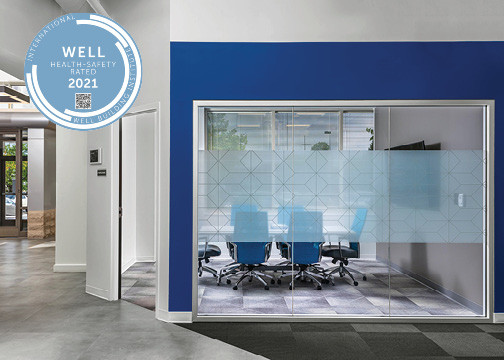
SSR WELL HEALTH-SAFETY RATING JOURNEY: Debrief
We made it! Seven of SSR’s offices achieved WELL Health-Safety Rating for Facility Operations and Management by the International WELL Building Institute (IWBI). We achieved the minimum of 15 points required for certification for each of the project locations. Now, what did we learn?
Don’t Recreate the Wheel
Once the project(s) are registered in WELL Online, the project team gains access to policy and documentation templates. Use these! This will save time and GBCI review comments because they will be comparing your documentation to these templates. The templates have all the necessary details that the reviewers will be looking for in your documentation, so if you are using your own, make sure that they include all the same parts and pieces as noted in the reference guide.
Filtration Upgrade Required
At the original time of submission (and previous blog post), pursuing the SA2 Assess and Maintain Air Treatment Systems did not explicitly state that they recommended filtration improvements be made. That has since changed. All teams are required to confirm that the improvements recommended from the assessment have been made by the time of submission or a firm timeline for completion. Based on this updated clarification, several of our offices were no longer meeting the criteria, so an alternate Feature had to be pursued.
Have a Buffer
Speaking of alternates, make sure you have at least 1-3 points above the 15-point threshold at the time of submission. In most cases, the GBCI reviewers are likely to catch something you may have missed in your documentation that may be a sticking point for compliance on a Feature. Therefore, submitting with a buffer will allow for dropping a Feature that doesn’t comply and speed up response and certification times.
Monitoring Results Not Required
As mentioned earlier, SSR needed an alternate feature to fill out the required 15 points for some locations. After discussion with the WELL technical team, it was confirmed that to pursue and achieve the SA4 Monitor Air and Water Quality feature, testing data was not required at the time of submission. Therefore, we could save time and resubmit with pursuit of this feature to get certification now and then plan for basic air and water testing over the next year. SSR has recently expanded our sustainability performance service line to include this testing, so it made sense to document and promote this Feature for our offices.
SSR’s Journey in Summary
The process had some minor bumps along the way such as gathering data across multiple offices and unexpected GBCI review comments. The team learned some valuable information that could be shared with clients and future projects and should provide our employees with an increased sense of trust when in our office spaces. Overall, the process was a success and SSR looks forward to maintenance and recertification in the new year.
Did you miss a stop along our journey? Our full blog series can be found at the links below:
Air & Water Quality – Maintenance
Air & Water Quality – Engineer Required
First Things First – How Much?
SSR Pursuing Well Health-Safety Rating
International WELL Building Institute, IWBI, the WELL Building Standard, WELL v2, WELL Certified, WELL AP, WELL Portfolio, WELL Portfolio Score, The WELL Conference, We Are WELL, the WELL Community Standard, WELL Health-Safety Rating, WELL Health-Safety Rated, WELL Workforce, WELL and others, and their related logos are trademarks or certification marks of International WELL Building Institute pbc in the United States and other countries.








